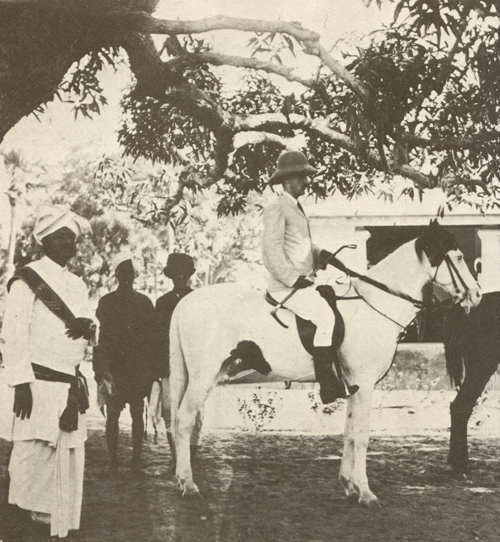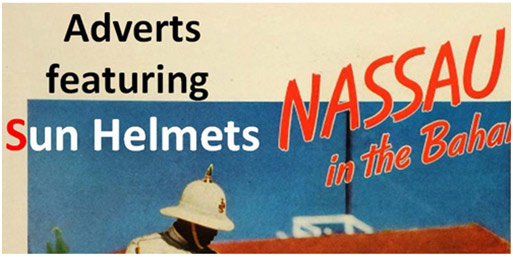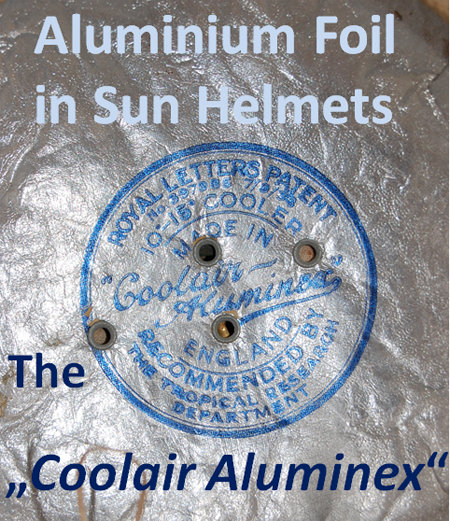 The subject of this article is a Foreign Service Helmet that I acquired 10 or so years ago from an antique mall in Canada. The seller did not represent it as anything in particular. It was just an old military helmet and plume with no provenance. Since that time it has been the focus of much frustration, as I have tried to nail down exactly what it is. I must thank my new friend Stuart Bates, for his “dog with a bone” attitude in helping me finally identify it, with certainty! Also thanks to Clive M. Law, Benny Bough, and my old friend Douglas N. Anderson, for their assistance and contribution in this effort. Continue reading
The subject of this article is a Foreign Service Helmet that I acquired 10 or so years ago from an antique mall in Canada. The seller did not represent it as anything in particular. It was just an old military helmet and plume with no provenance. Since that time it has been the focus of much frustration, as I have tried to nail down exactly what it is. I must thank my new friend Stuart Bates, for his “dog with a bone” attitude in helping me finally identify it, with certainty! Also thanks to Clive M. Law, Benny Bough, and my old friend Douglas N. Anderson, for their assistance and contribution in this effort. Continue reading
Category Archives: Cork
The British Four Panel Colonial Helmet
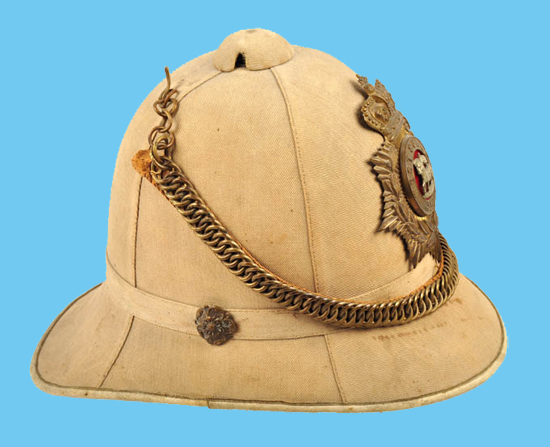
An example of a Colonial Pattern helmet with four panels rather than the more usual and authorized six panels. This example is to an Other Rank of the Queen’s Royal Regiment (West Surrey). (Photo courtesy Roland Gruschka)
The 1st Battalion West Surrey was stationed in Malta in 1892 and it appears that this type of helmet was not uncommon in Mediterranean stations for the British Army. However, the Dress Regulations of 1894 state that puggarees were to be worn in such stations as India, Bermuda, Ceylon, Hong Kong, Egypt, the Straits Settlements, West Indies, Mauritius, Malta, West Coast of Africa and Cyprus and that the full Home Service pattern helmet plate was to be worn at other stations, i.e. those where the puggaree was not authorized. There was a term “Mediterranean Order” which translated to no puggaree but full helmet plate and it appears that the cork ventilation was also a feature of this “order.” In 1899 puggarees were authorised for all stations abroad. Continue reading
Henry James Frampton, CSI, CIE, MC, ICS
Henry James Frampton was born in August 1897, at South Stoneham, Hampshire, first son of Henry Manwell Frampton (plasterer) and Mary Frampton. He served with distinction in the First World War and joined the Indian Civil Service (I.C.S.) in 1921. Continue reading
Sun Helmets in Adverts
Sun helmets can be found on many contemporary adverts of military outfitters or civilian hatters that manufactured such helmets for military personal. This article shows some different adverts. They do not present the sun helmet itself as a ware, but uses its significance as an icon for an exotic surrounding or to create an image of bygone circumstances. A small study in helmets and marketing methods. Continue reading
Aluminium Foil in Sun Helmets
Although the use of aluminum foil had been experimented with in the late 1800s, in the middle of the 1930s the first sun helmets came into use that featured a layer of aluminum foil inside the dome as a protection against the heat. Continue reading
The American Summer Sun Helmet
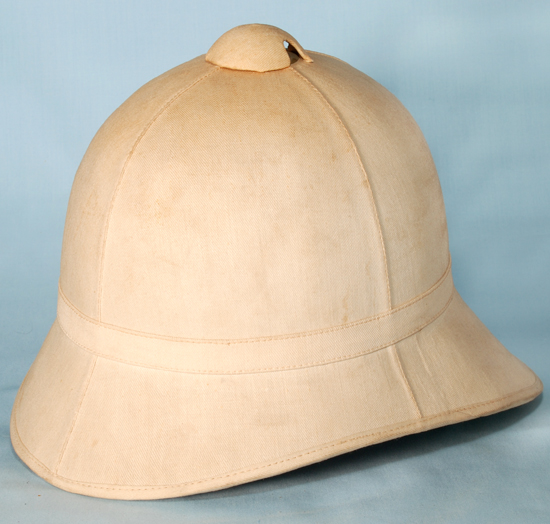
The “Classic” American Sun Helmet of the late 19th Century. This Model 1887 helmet features four panel construction and is constructed of cork covered with bleached cotton drill.
While the various European powers sought a “place in the sun” and established colonies around the world, the United States in the latter half of the 19th century expanded westward and tamed the interior of the North American continent. Continue reading
The British Home Service Helmet
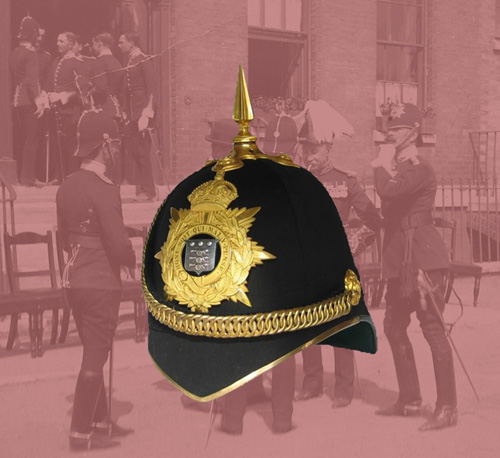
An example of an officer’s version of the Home Service Helmet. This one is provenanced to W. Swan of the Army Ordnance Department. (Author’s collection)
While we focus on sun helmets on this website these are, of course, only one form of headgear among many worn by armies throughout history. The subject of this article is the British Home Service Helmet, which in this writer’s opinion was inspired by the Colonial Pattern sun helmet worn in India from at least as early as the 1850s.

